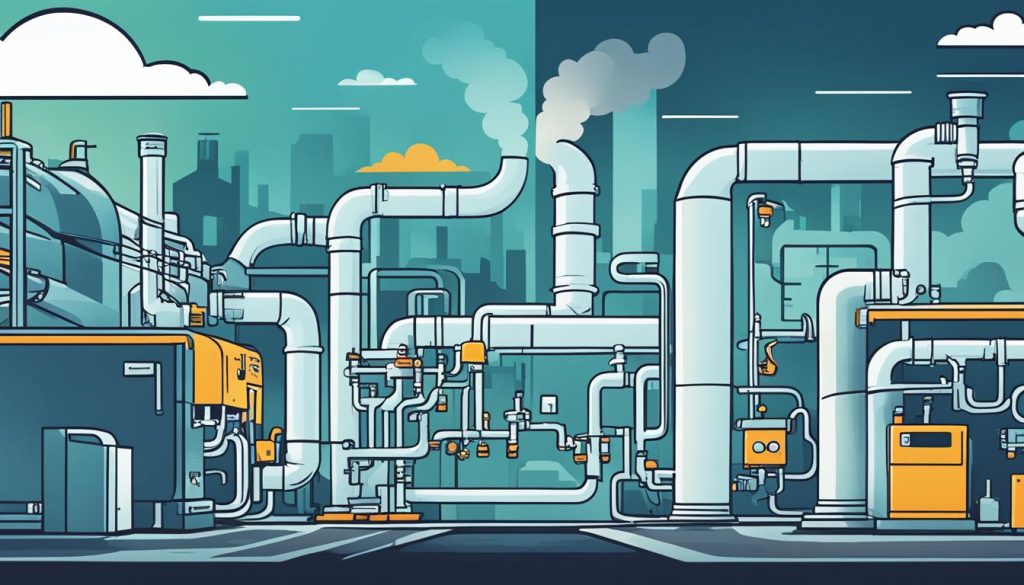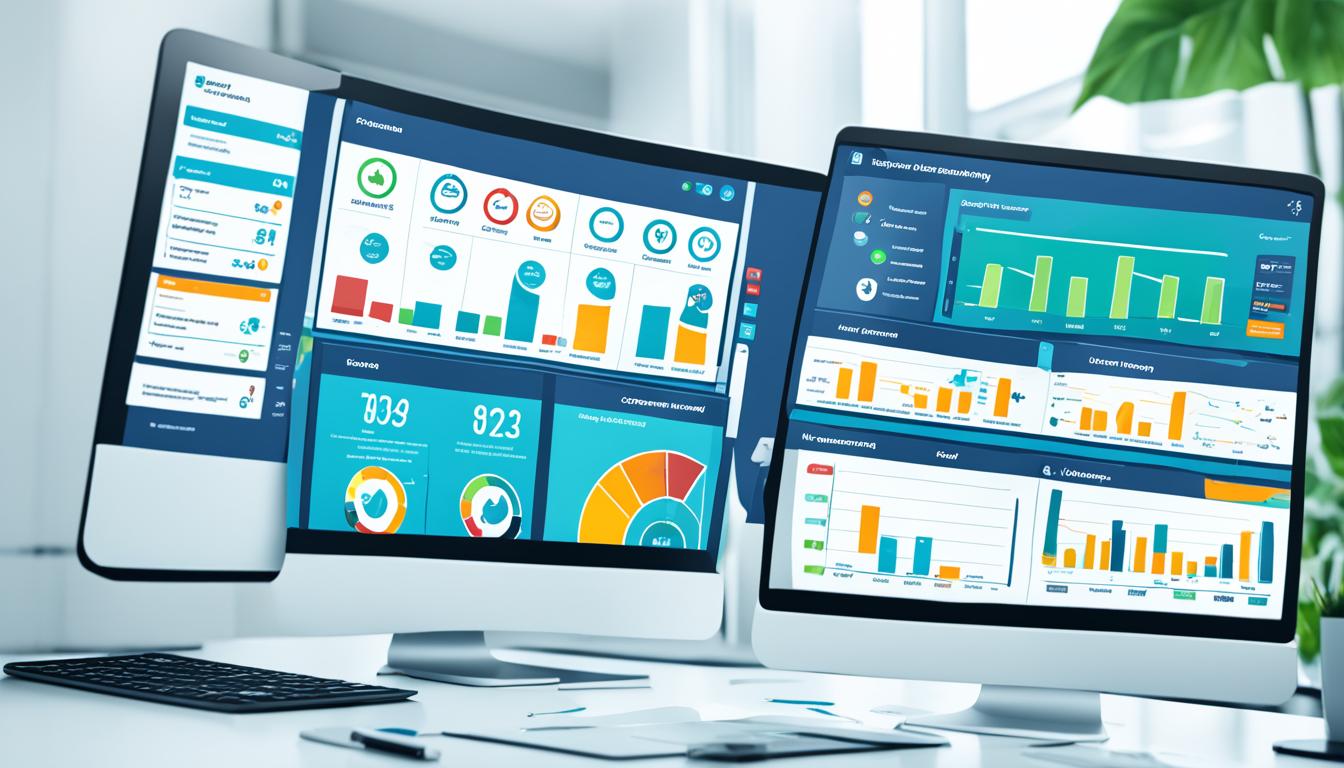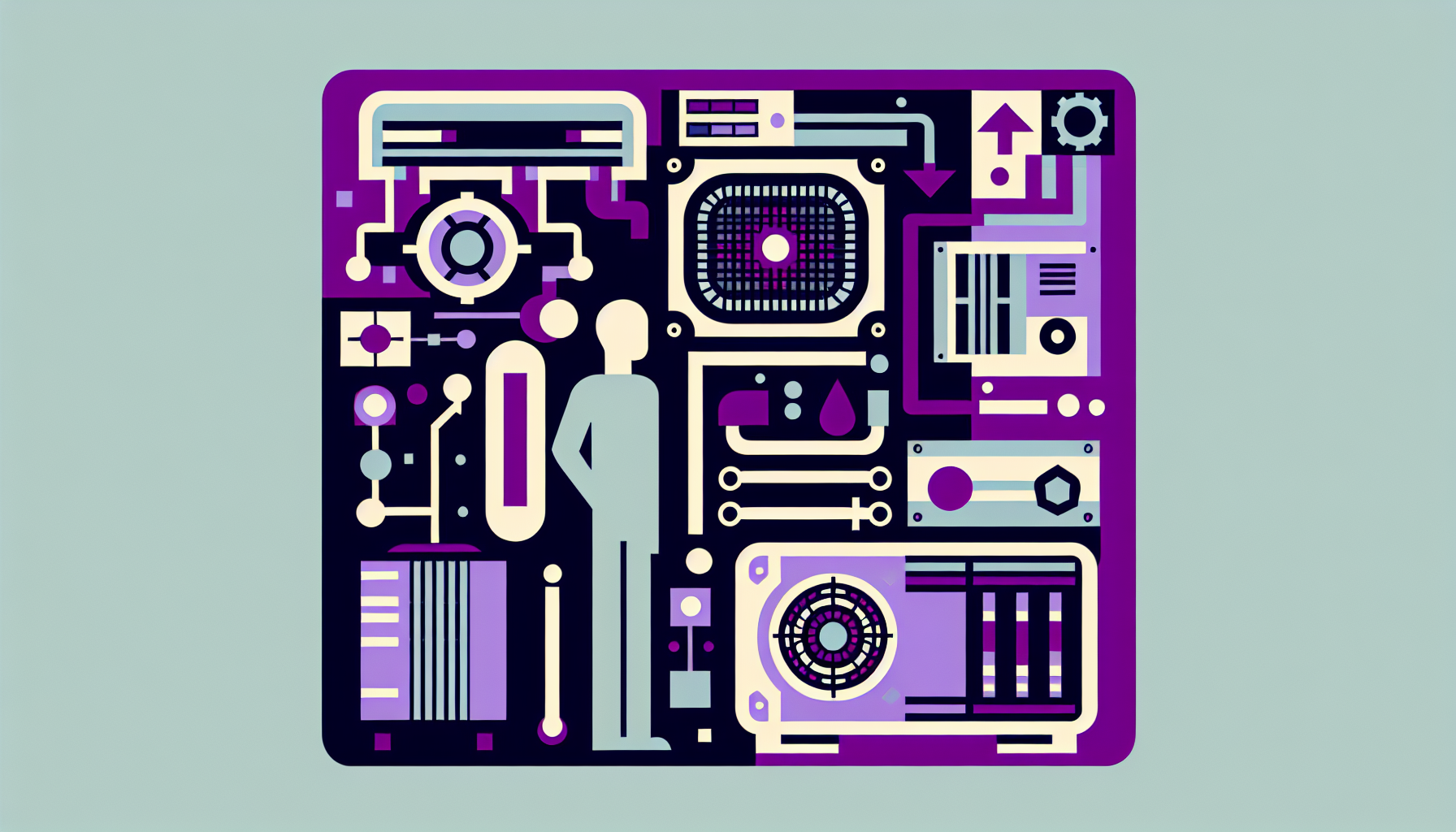HVAC compliance software keeps you ahead in following industry standards and rules. These tools help you manage complex rules, improve system performance, and keep your HVAC safe and efficient.
Following HVAC standards is key for many reasons. It keeps building occupants safe, boosts energy efficiency, and cuts down on environmental harm. With the right software, you can make following these standards easier and keep up with new rules.
Keeping up with HVAC regulations is tough for professionals. Rules change often at local, national, and global levels. Tools like HVAC Load Calculator can help you stay updated and compliant without overloading your team.
When looking at HVAC compliance software, think about how it fits with your current systems and workflows. The right software can make following standards simpler, cut down on mistakes, and save time and money over time.
Understanding HVAC Industry Standards and Regulations
HVAC code conformity is key for safe and efficient systems. The industry follows strict standards and regulations. These ensure quality, safety, and energy efficiency. Let’s look at the main parts of HVAC compliance management.
Overview of HVAC Compliance Requirements
HVAC systems must follow strict rules for installation, upkeep, and performance. These rules change by location but usually cover:
- Safety protocols
- Energy efficiency standards
- Environmental impact regulations
- Building code compliance
Key Regulatory Bodies and Their Standards
Several groups set and enforce HVAC standards:
| Regulatory Body | Focus Area |
|---|---|
| ASHRAE | Energy efficiency and indoor air quality |
| EPA | Environmental protection and refrigerant use |
| OSHA | Workplace safety in HVAC operations |
| Local Building Departments | City-specific building codes and permits |
Importance of Compliance in HVAC Operations
Following HVAC regulations is crucial for:
- Ensuring system safety and reliability
- Protecting occupant health and comfort
- Avoiding legal penalties and fines
- Maintaining professional credibility
- Optimizing energy efficiency and cost savings
By focusing on HVAC code conformity, you protect your operations and support sustainable building practices. Effective HVAC compliance management means keeping up with new rules and using strong tracking systems.
The Role of Software in HVAC Compliance Management
HVAC compliance automation has changed how businesses handle their heating, ventilation, and air conditioning systems. Now, software is key in making compliance easier. It helps manage everything from the start to the end.
These tools make it easy to manage data. You can quickly get to and understand important info. They automate tasks to cut down on mistakes and make sure your HVAC systems follow the rules.
Software for HVAC compliance monitoring gives you updates on your system’s performance in real-time. This lets you fix problems fast. It also keeps up with new rules, making it easier to follow them.
- Improved operational efficiency
- Reduced risk of violations
- Structured planning support
- Accurate load calculations
- Energy code compliance assistance
Using HVAC compliance software boosts your efficiency and lowers the chance of fines. It helps with planning and making smart choices for your HVAC systems. It also ensures your equipment is the right size for the best performance.
Software is a big help with energy code compliance too. It has features to help you meet energy efficiency standards. This can cut down on your environmental impact and might lower your costs.
Key Features of HVAC Compliance Software
HVAC compliance software has powerful tools to help you follow the rules. It makes it easy to keep up with HVAC standards. Let’s look at what makes this software a must-have for your business.
Automated Compliance Tracking and Reporting
Modern HVAC compliance reporting tools make tracking easy. They check your systems against the rules and alert you to any issues. This saves you time and cuts down on mistakes.
Real-time Monitoring and Alerts
With real-time monitoring, you’re always in the loop. The software sends alerts right away when there’s a problem. This way, you can fix things fast and keep up with HVAC standards.
Document Management and Record Keeping
Keeping your documents in order is key for HVAC compliance. The software has a spot for all your compliance documents. It keeps track of versions and makes documents easy to find during audits.
Integration with Building Management Systems
This software works well with your building management systems. It gives you a full view of your HVAC operations. Sharing data between systems makes things more efficient and helps with managing compliance.
| Feature | Benefit |
|---|---|
| Automated Tracking | Reduces manual work and errors |
| Real-time Alerts | Enables quick issue resolution |
| Document Management | Simplifies record-keeping and audits |
| System Integration | Improves overall operational efficiency |
Using these features can really boost your HVAC compliance. The software makes reporting easier and keeps your HVAC systems up to standard.
Implementing HVAC Software for Compliance: Step-by-Step Guide
Implementing HVAC compliance software can make following regulations easier. This guide will show you how to add this important tool to your operations.
First, figure out what compliance you need to follow. Know the rules and the data you must track. This helps you pick the right software.
Then, find software that meets your needs. Look for features like automated tracking, alerts, and detailed reports. Make sure it works well with your current systems.
After choosing, customize the software for your needs. Set up rules for HVAC compliance, like temperature limits, maintenance schedules, and energy goals.
| Implementation Step | Key Actions |
|---|---|
| Needs Assessment | Identify regulations, required data points |
| Software Selection | Compare features, check integration capabilities |
| Customization | Set compliance parameters, tailor reporting |
| Staff Training | Conduct workshops, provide user guides |
| Data Migration | Transfer existing records, verify accuracy |
Training your staff is key to using the HVAC compliance software well. Set up workshops and give out user guides. This ensures your team knows how to use the system.
Lastly, move your current compliance data into the new software. Check that the data is correct to keep your compliance records accurate. With these steps done, you’re set to use your new HVAC compliance software for better adherence to regulations.
Ensure Compliance with HVAC Software: Best Practices
Following HVAC compliance best practices is key for smooth operations and meeting standards. Using HVAC software helps make compliance easier and keeps your systems current. Let’s look at strategies to get the most from your HVAC software.
Regular Software Updates and Maintenance
Keeping your HVAC software up-to-date is crucial. Regular updates keep your system in line with new rules and standards. Make sure to schedule regular checks for updates, bug fixes, and new features. This way, you avoid downtime and keep your HVAC systems running well.
Staff Training and Adoption Strategies
Train your team well on HVAC software use. Offer thorough training on software features, compliance needs, and best practices. Show your team how the technology makes tasks easier and more accurate. This will help them use it fully.
Customizing Software to Meet Specific Compliance Needs
Adjust your HVAC software to fit your unique compliance needs. Customize reporting, alerts, and monitoring to match specific rules. This tailored approach keeps your systems compliant and boosts performance for your specific needs.
| HVAC Compliance Best Practices | Benefits |
|---|---|
| Regular software updates | Ensures compliance with latest regulations |
| Comprehensive staff training | Improves software adoption and efficiency |
| Customized compliance features | Addresses specific industry requirements |
| Automated tracking and reporting | Reduces errors and saves time |
By following these HVAC compliance best practices, you can fully use your software. This ensures smooth operations and follows regulations. Always check and improve your strategies to lead in the changing HVAC world.
Case Studies: Successful Implementation of HVAC Compliance Software
HVAC compliance case studies show how real businesses have succeeded with software. They share stories of overcoming challenges and meeting rules with new solutions.

A big commercial complex in New York City is a great example. The manager used a detailed compliance software to meet tough energy efficiency laws. This software helped track HVAC performance, made reporting easy, and planned maintenance.
The results were amazing:
- 20% less energy used
- 15% lower maintenance costs
- No rule violations in the first year
Another story is from a residential HVAC company in California. They got compliance software to meet new environmental rules. The software made paperwork easier, made sure techs followed the right steps, and kept accurate records.
Here are the main results:
- 50% fewer paperwork mistakes
- 30% higher customer satisfaction
- Passed all audits
These HVAC compliance case studies show the big wins of using the right software. They bring better efficiency and lower risks. The right tools can change HVAC operations for the better, ensuring success in a strict industry.
Overcoming Challenges in HVAC Software Adoption
Adopting HVAC software for compliance has big benefits, but it comes with challenges. Many companies struggle with these issues during implementation. Knowing these challenges helps make the transition smoother.
Addressing Data Security Concerns
Data security is crucial when using new software. HVAC compliance data has sensitive info about building systems and operations. To tackle this:
- Choose software providers with strong security
- Use strong access controls and encryption
- Keep software updated to fight vulnerabilities
Managing Integration with Existing Systems
Integrating new HVAC software with old systems is tricky. This process includes:
- Moving data from old systems
- Checking compatibility with current hardware
- Training staff on new ways of working
Overcoming these challenges needs careful planning and action.
Balancing Cost and Benefits of Implementation
The initial cost of HVAC compliance software is high. To make it worth it:
- Figure out potential savings from better efficiency
- Think about long-term benefits like fewer compliance risks
- Look for solutions that can grow with your business
By tackling these challenges directly, you can successfully use HVAC software and enjoy its benefits. Remember, see these challenges as opportunities for better operations and compliance.
Future Trends in HVAC Compliance Software
HVAC compliance technology trends are changing the game for HVAC software. The industry is moving fast, bringing big changes to how we manage and keep track of compliance. Let’s dive into what’s coming next.
Artificial Intelligence Integration
AI is going to change HVAC compliance software a lot. Soon, you’ll get predictive compliance analysis. This means the software will spot problems before they happen. It’s a smart way to stay on top of rules and make your systems work better.
Internet of Things Connectivity
IoT devices are becoming key to HVAC systems. Future software will use this connection for real-time checks and data gathering. You’ll get instant updates, making it easier to handle compliance issues fast.
Blockchain for Data Security
With more worries about data safety, blockchain is becoming a big deal. HVAC compliance software will use blockchain to keep records safe and make data more reliable.

Smart Building Integration
The future of HVAC software is all about working well with smart building systems. This means better energy use and handling compliance as HVAC works with the building’s controls.
| Trend | Impact on Compliance | User Benefit |
|---|---|---|
| AI Integration | Predictive analysis | Proactive management |
| IoT Connectivity | Real-time monitoring | Instant data access |
| Blockchain | Enhanced data security | Improved record integrity |
| Smart Building Integration | Holistic compliance | Increased energy efficiency |
These new changes in HVAC compliance software will change how you handle your systems. By keeping up with these trends, you’ll be ready to use new tech and keep up with changing rules.
Measuring the ROI of HVAC Compliance Software
Investing in HVAC compliance software can bring big benefits to your business. Let’s look at how to measure the ROI and see the long-term value of HVAC software.
Direct Cost Savings from Improved Compliance
HVAC compliance software cuts down on risks and makes things run smoother. It automates tracking, avoiding fines and penalties. This means you save money, which adds to your ROI.
Indirect Benefits: Enhanced Efficiency and Reputation
HVAC software offers more than just direct savings. It makes your system more efficient, cutting energy costs and maintenance. Plus, being consistently compliant boosts your reputation, drawing in more clients and partners.
Long-term Value Proposition of Compliance Software
HVAC compliance software keeps giving over time by adapting to new rules. It gives you data for better decisions and helps your HVAC management excel.
| ROI Factor | Short-term Impact | Long-term Impact |
|---|---|---|
| Cost Savings | Reduced fines and penalties | Lower operational costs |
| Efficiency | Streamlined compliance processes | Improved resource allocation |
| Reputation | Increased client trust | Industry leadership position |
| Adaptability | Quick response to regulation changes | Sustained compliance excellence |
Looking at these points helps you see the ROI of HVAC compliance software. This way, you can make smart choices for your business’s future.
Conclusion
HVAC compliance management is key in today’s complex world. The role of HVAC software is huge. It helps businesses keep up with new rules and standards.
These tools do more than track compliance. They make things more efficient, reduce costs, and make things safer. By automating tasks and offering real-time data, HVAC software saves time for other important work.
In the future, HVAC compliance software will be even more important. As rules get tougher and saving energy becomes more important, these tools will be vital. They’ll help companies adjust, innovate, and succeed in a changing market.
Choosing HVAC software is a wise decision for any business in the field. It’s not just about following rules. It’s about staying ahead and building a sustainable future. With the right tools, you can turn compliance challenges into chances for growth and excellence.





0 Comments